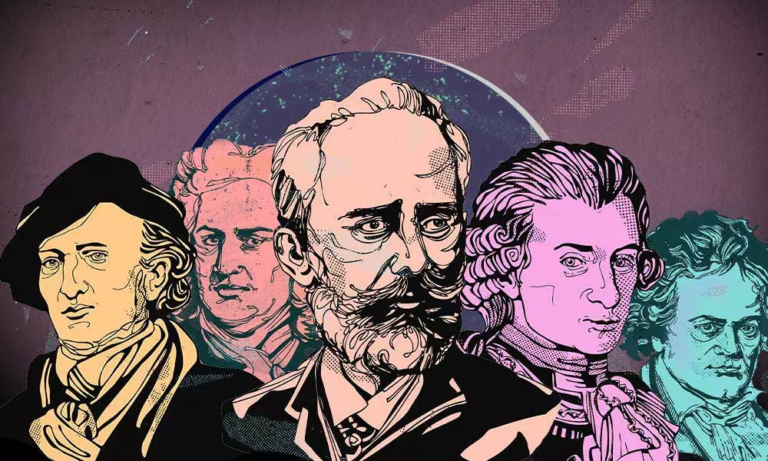Feeling the Beat: The Power of Music in Enhancing Video Game Narratives
In the vast realm of interactive entertainment, where pixels dance to the commands of players and narratives unfolds with each click of a controller exists a subtle yet mighty force—a force that transcends the boundaries of screens and seeps into the very fabric of the gaming experience. From the 8-bit bleeps of classic arcade games to the sweeping orchestral scores of cinematic epics, the evolution of video game music is a testament to its transformative power. Game soundtracks have become architects of emotions and silver-tongued narrators in their own right. The right notes at the right time can elevate a good game to greatness, etching memories that linger long after the screen goes dark.
Image: Unsplash
This article embarks on a journey to dissect the intentional craftsmanship behind every melody, peeling back the layers of collaboration between musicians and developers. Together, they create an immersive gameplay experience that transcends the visual and auditory senses, transporting players into alternate dimensions of emotional resonance.
Setting the Stage
Music has a profound ability to establish the mood and atmosphere of a video game as it acts as an overture to a player’s emotional journey. It sets the stage for an unforgettable experience. through an excellent combination of music choices for each scene and the progression that matches the scene. Silent Hill series’ soundtrack is renowned for its ability to evoke a chilling sense of unease and dread, while the sweeping scores of The Elder Scrolls series perfectly capture the grandeur and mysticism of its expansive fantasy world.
Even with magnificent graphics, the heart of the story and narration is not always captured that’s why a piece of appropriate music is paramount in every gameplay, especially those that play with subtlety rather than implosive scenes.
Music as a Window into the Soul
Beyond its atmospheric role, music serves as a powerful tool for character development, providing insights into personalities, emotions, and motivations. Recurring themes or leitmotifs associated with specific characters act as musical portals into their inner worlds, helping players connect with them on a profound level.
For instance, in the critically acclaimed indie game Celeste, the protagonist’s anxiety and determination find expression in the game’s soundtrack, which seamlessly transitions from calming ambient melodies to intense chiptune tracks during challenging platforming segments. In this way, the music becomes a conduit for players to empathize with the struggles and aspirations of the characters they control.
Amplifying the Impact of Narrative Moments
Within the interactive tapestry of video games, music plays a crucial role in amplifying the emotional impact of key narrative moments. From triumphant victory themes that resonate with the jubilation of overcoming challenges to heartbreaking loss cues that tug at the heartstrings, the synergy of visuals and music heightens the player’s emotional response. This phenomenon is not only observed in extremely lore-concentrated video games but also in the vast world of online casinos.
For instance, in online pokies in Australia, games like Spin Fever are not merely marketed for the potential of hitting the jackpot, but for gameplay that is enriched by music pieces. These range from a simple “ka-ching!” to a slot game inspired by the life of Motörhead, a popular rock band that helped pioneer the metal genre. Pokies, commonly known as slots, enjoy significant popularity in Australia, underscoring the importance of sound effects in these games.
Though it may seem insignificant, music plays a vital role in building the narrative of a video game, making it more appealing and easier to market on websites that guide people to find the best deals and enjoy delightful playing experiences simultaneously.
Music as a Narrative Thread
Further, music reinforces the thematic elements and messages conveyed by a video game’s narrative, weaving a cohesive thread that ties the visual and auditory elements together. Lyrical songs, instrumental compositions, and the overall tone and style of the soundtrack can be strategically used to emphasize the game’s central themes. A striking example of this synergy is found in the Bioshock series, where the soundtrack’s blend of classical and industrial elements mirrors the game’s exploration of societal control and the perils of unchecked power. In this way, music becomes an integral part of the storytelling process, enhancing the narrative depth and player engagement.
Music as a Conduit to Another World
As specified earlier, the beauty of gameplay is not delivered through graphics and lore alone. There has to be an aspect that would totally hook the players even without them knowing it and that is what music gives us. The well-crafted soundscapes and melodies associated with different environments evoke a plethora of emotions that hit the last nail in the coffin when delivering magnificent and out-of-this-world gameplay. The fusion of auditory and visual elements becomes the bridge that deepens the player’s connection to the game world, making it more than pixels on a screen but a living, breathing universe to explore.



